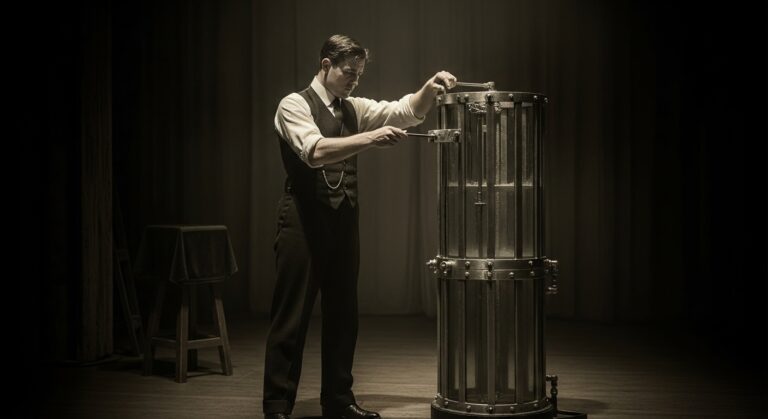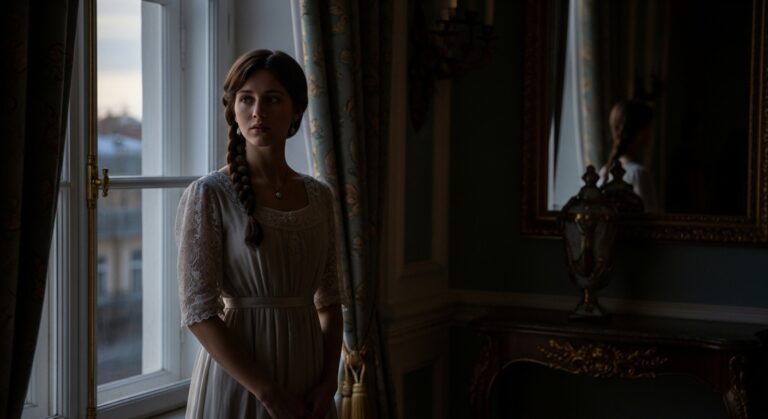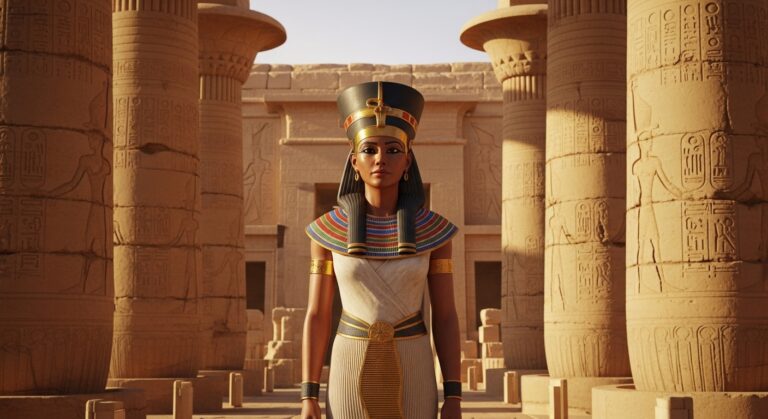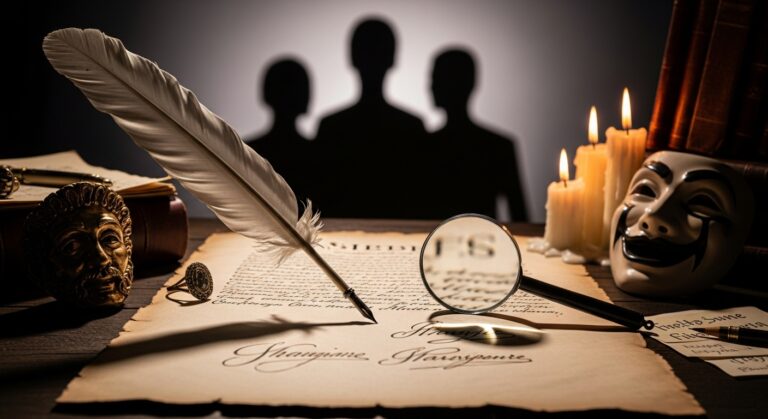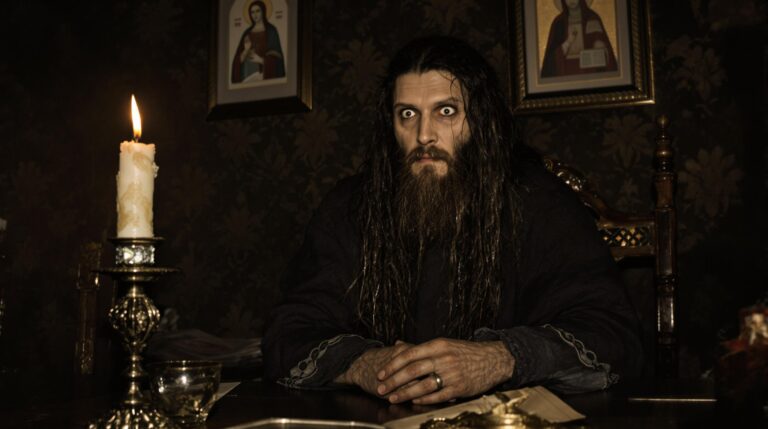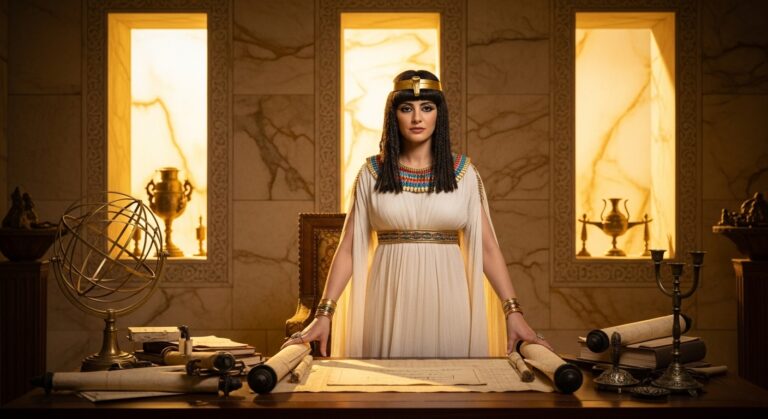Dr. John Dee: Scholar, Occultist, or Both?
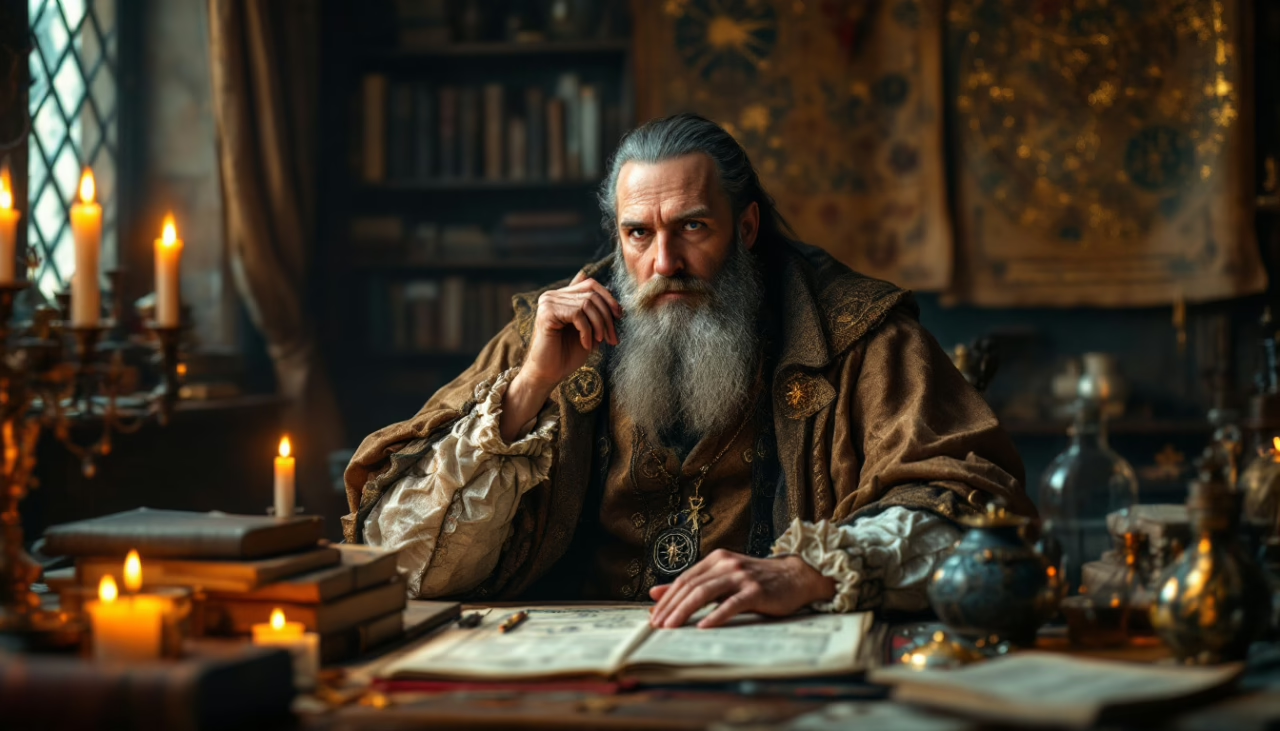
Dr. John Dee occupies a liminal space in Tudor intellectual history, defying easy categorization. Court astrologer to Elizabeth I, he consulted ancient texts and angelic messengers with equal rigor, his meticulous journals documenting both scientific observations and supernatural communications.
Cambridge-educated yet drawn to esoteric knowledge, Dee’s library—once England’s largest private collection—housed works of mathematics alongside grimoires.
His scrying sessions with Edward Kelley produced the enigmatic Enochian language, purportedly of celestial origin. What compelled this respected mathematician to pursue communion with angels?
TL;DR
Hide- John Dee embodied both scholarly and occult pursuits, maintaining prestigious academic credentials while practicing angelic communication and Enochian magic.
- His extensive library at Mortlake housed scientific texts alongside esoteric works, reflecting his dual intellectual interests.
- Dee combined mathematical rigor with mystical practices, applying scientific methodologies to both conventional studies and supernatural investigations.
- As Queen Elizabeth's advisor, he simultaneously provided practical navigation expertise and astrological predictions that influenced royal decisions.
- Renaissance intellectual culture didn't separate science from magic, allowing Dee to pursue natural philosophy and occult knowledge as complementary disciplines.
The Early Life and Education of John Dee
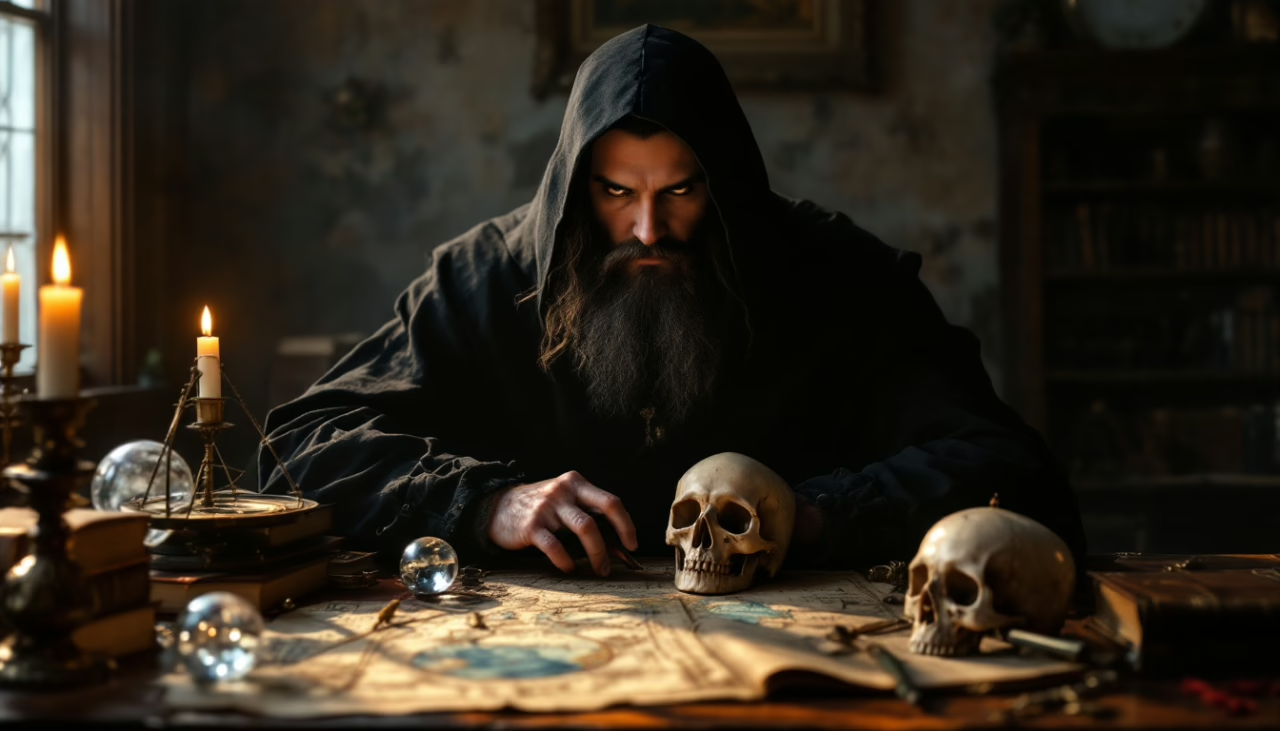
John Dee’s emergence as a Renaissance polymath can be traced to his formative years at St. John’s College, Cambridge, where his prodigious intellect flourished amid the humanist curriculum of the 1540s.
His intellectual development was markedly shaped by interactions with prominent mathematicians Henry Billingsley and Gemma Frisius, whose works on geometry and astronomy would later inform Dee’s own mathematical prefaces and celestial observations.
These early scholarly foundations, juxtaposed against the medieval scholasticism still prevalent in English education, positioned Dee at the vanguard of a new intellectual movement that sought to harmonize classical knowledge with emerging scientific methodologies.
Foundations of a Renaissance Polymath
John Dee’s formative intellectual journey began at St. John’s College, Cambridge, where he immersed himself in the university’s rigorous classical curriculum while developing a particular affinity for mathematical sciences.
His academic prowess earned him a fellowship at Trinity College, where contemporary accounts suggest he regularly studied fifteen hours daily, demonstrating the intensity that would characterize his lifelong scholarly pursuits.
Dee’s Cambridge years reveal the early intersection of his mathematical interests with astrological studies—a synthesis that, while commonplace among Renaissance scholars, would later fuel both his greatest achievements and most controversial endeavors.
Dee’s academic training at Cambridge
In 1542, at the impressively young age of fifteen, Dee matriculated at St. John’s College, Cambridge.
There, he immersed himself in the Cambridge curriculum, particularly mathematical pursuits that would later define his work. Under early mentors like John Cheke, Dee established crucial academic networks.
His scholarly influences extended beyond formal instruction as he navigated intellectual circles that balanced Renaissance humanism with emerging scientific methodologies.
His early fascination with mathematics and astrology
Fascination with the celestial mysteries and mathematical order emerged early in Dee’s intellectual development, predating his formal university studies.
His early calculations revealed uncommon aptitude for mathematical theories, while his meticulously crafted astrological charts demonstrated belief in celestial influences on earthly affairs.
This intellectual marriage of numerical symbolism and cosmic observation would define his scholarly trajectory, positioning him at the intersection of Renaissance science and esoteric knowledge.
Influential Figures in Dee’s Formative Years
John Dee’s intellectual trajectory was profoundly shaped by a constellation of Renaissance luminaries, including the mathematician-astronomer Gemma Frisius, who cultivated his lifelong fascination with cosmography during his studies at Louvain.
This formative period saw Dee forge connections with prominent European scholars such as Gerard Mercator, whose cartographic innovations would later influence Dee’s own conceptualization of England’s maritime aspirations.
Through these relationships, established during his continental travels between 1547 and 1551, Dee positioned himself within a transnational network of natural philosophers whose methods bridged medieval scholasticism and emerging empirical approaches—connections that would later prove vital as Dee navigated the permeable boundaries between conventional academia and esoteric inquiry.
Mentors who shaped Dee’s thinking
While establishing himself as an intellectual polymath during the Tudor era, Dr. John Dee cultivated profound mentorship dynamics with luminaries like Gerardus Mercator and Abraham Ortelius.
These scholarly networks facilitated his immersion in philosophical debates spanning mathematics, astronomy, and nascent occult sciences.
His intellectual influences—particularly Neoplatonist thinkers—shaped his educational impact across disciplines, establishing foundations for his controversial dual identity as both rigorous academic and mystical explorer.
Early scholarly connections across Europe
As Dr. Dee traversed continental Europe, he cultivated extensive scholarly networks, engaging in intellectual exchanges with luminaries of renaissance humanism.
His early collaboration with mathematicians in Louvain and astronomers in Paris transcended mere academic discourse, forging cross-cultural influences that would shape his distinctive worldview.
These formative connections, documented in his meticulous correspondence, reveal a man simultaneously embedded within and transcending the intellectual boundaries of sixteenth-century Europe.
John Dee in Elizabethan England
In the labyrinthine court of Elizabethan England, John Dee secured an exceptional position as Queen Elizabeth‘s trusted advisor on matters astronomical, navigational, and occasionally, political.
The monarch’s consistent patronage afforded Dee protection from accusations of sorcery that might otherwise have imperiled his controversial studies, particularly during his residency at Mortlake.
At his riverside home-turned-research-institute, Dee assembled one of England’s most extensive libraries—containing over 4,000 volumes—where he entertained royal visitors while conducting experiments that blurred the boundaries between Renaissance science and arcane mysticism.
Dee’s Relationship with Queen Elizabeth I
Dr. John Dee’s position at Elizabeth I’s court transcended mere scholarly presence, establishing him as a trusted advisor whose astrological calculations determined the queen’s coronation date and whose counsel informed numerous matters of state.
The mathematician-astrologer provided Elizabeth with geographical intelligence essential for England’s maritime aspirations, including annotated maps and navigational instruments that bolstered the nascent empire’s explorations across uncharted waters.
Though never granted official title at court, Dee maintained privileged access to the monarch for over thirty years, embodying the Renaissance intersection of empirical knowledge and esoteric wisdom that Elizabeth, herself a learned sovereign, found particularly valuable during her pragmatic yet occasionally superstitious reign.
Serving as an advisor and astrologer to the Queen
While many individuals served the Tudor court in various capacities, few maintained the unique position that John Dee held as both confidant and celestial consultant to Queen Elizabeth I.
His astrological predictions guided royal court decisions, extending his political influence beyond scholarly domains.
Through mystical practices that fascinated the queen, Dee provided personal counsel that transcended conventional advisory roles, cementing his status in Elizabeth’s inner circle.
Contributions to Elizabethan exploration and politics
Beyond his mystical consultations, John Dee profoundly shaped England’s imperial ambitions through his revolutionary cartographic expertise and geopolitical theories.
His exploration strategies, bolstered by scientific advancements in maritime navigation, provided Elizabeth’s navigators with vital advantages.
While securing royal patronage for expeditions, Dee’s political influence extended to advocating for a “British Empire”—a term he coined—establishing territorial claims that would expand England’s dominion across uncharted seas.
The Scholar at Mortlake
At his riverside home in Mortlake, Dee amassed one of early modern England’s most impressive private libraries, housing over 4,000 manuscripts and printed volumes—a collection that rivaled many university holdings of the era.
Scholars from across Europe sought access to Dee’s bibliographic treasury, which contained rare classical texts, medieval manuscripts, and contemporary scientific works otherwise unavailable in England.
Through his meticulous preservation efforts, Dee functioned as both curator and guardian of intellectual heritage during a period when religious upheaval threatened the survival of countless ancient manuscripts, positioning his Mortlake residence as an essential, albeit unofficial, repository of Renaissance knowledge.
Establishing one of England’s largest private libraries
At his Mortlake estate, John Dee amassed a remarkable library of over 4,000 volumes.
This collection, unprecedented in sixteenth-century England, encompassed disciplines from mathematics to mysticism, reflecting Dee’s intellectual breadth and his determination to preserve knowledge for future generations.
Dee’s role in preserving knowledge and manuscripts
Throughout Europe’s tumultuous religious and political upheavals, John Dee emerged as a pivotal guardian of endangered knowledge, rescuing numerous medieval manuscripts from dissolution and potential destruction.
His scholarly networks facilitated manuscript preservation across international borders, while his meticulous historical documentation methods guaranteed medieval knowledge survived for posterity.
Dee’s library collections, assembled with scholarly prescience, safeguarded intellectual treasures that might otherwise have vanished forever.
Dr. John Dee’s Occult Interests
John Dee’s reputation among scholars and the public often hinges on his fascination with Enochian magic, a complex system of angelic communication he developed with scryer Edward Kelley between 1582 and 1589.
While contemporaries viewed these magical investigations with suspicion, Dee himself perceived no contradiction between his scientific pursuits and his attempts to access divine knowledge through ceremonial practices.
His meticulous records of angelic conversations, preserved in manuscripts like Liber Mysteriorum, reveal a methodical approach to the supernatural that mirrored his scientific inquiries, challenging modern distinctions between Renaissance occultism and nascent empiricism.
Dee and Enochian Magic
Dr. John Dee’s fascination with the supernatural domain emerged from his Renaissance belief that angels could illuminate cosmic truths inaccessible through conventional scholarship.
Beginning in 1582, Dee formed a consequential partnership with Edward Kelley, a self-proclaimed medium who served as intermediary during “angelic conferences” where spirits allegedly dictated an esoteric language and system of magic.
These elaborate sessions, meticulously documented in Dee’s journals, produced the Enochian magical system—supposedly the language of angels—which revealed celestial hierarchies and rituals intended to decode divine mysteries within the universe.
Origins of Dee’s fascination with angels and spirits
Intellectual curiosity drove Dee’s initial forays into angelic communication, emerging not as a sudden deviation from scholarly pursuits but as a natural extension of his Renaissance worldview.
His fascination with celestial beings developed from studying Neoplatonic texts that detailed angelic hierarchies.
Through mystical experiences documented in his journals, Dee believed divine inspiration could be accessed through spiritual communication, viewing angels as intermediaries between humanity and cosmic knowledge.
Partnership with Edward Kelley and angelic communications
While Dee’s private studies of angelic domains had occupied his attention for years, his collaboration with the enigmatic scryer Edward Kelley in 1582 marked a pivotal transformation in his occult practices.
Their spiritual partnership yielded extraordinary mystical experiences:
- Kelley served as medium, claiming to see angels in Dee’s crystal ball
- Complex angelic communication systems developed through their séances
- Collaborative practices documented in meticulous journals
- Esoteric knowledge including Enochian language revealed
- Controversial instructions sometimes tested their alliance
Magical Practices and the Public Image
In Elizabethan England, the demarcation between what constituted legitimate natural philosophy and forbidden occult practice remained remarkably fluid, allowing Dee to navigate both worlds with precarious legitimacy.
Queen Elizabeth I initially extended her royal protection to Dee’s mystical inquiries, consulting him on astrologically auspicious dates for her coronation while maintaining plausible deniability regarding his more controversial spiritual communications.
However, as Dee’s experiments with Edward Kelley grew increasingly esoteric—particularly their angelic conversations through crystal-gazing—public opinion soured considerably, transforming his reputation from respected mathematician to suspected conjurer of demonic forces.
The line between accepted science and the occult in Dee’s work
Throughout the sixteenth century, the demarcation between what constituted legitimate scientific inquiry and forbidden occult practice remained particularly fluid, a circumstance that Dr. John Dee navigated with remarkable dexterity.
His interdisciplinary approaches challenged conventional knowledge boundaries, blending scientific methodology with mystical beliefs in ways that defied simple categorization.
- Mathematical calculations existed alongside angelic conversations
- Astronomical observations complemented astrological interpretations
- Cartography merged with geomantic divination practices
- Optics intertwined with crystal-gazing techniques
- Linguistic studies paralleled efforts to recover Enochian language
Public and royal reaction to Dee’s mystical endeavors
Dr. John Dee’s mystical reputation provoked intense public skepticism, yet paradoxically secured royal patronage under Elizabeth I, who valued both his scientific inquiry and occult insights.
This dichotomy reflected broader societal implications of Renaissance thought, wherein intellectual boundaries remained fluid.
Court access shielded Dee temporarily from accusations of sorcery, though his esoteric pursuits ultimately compromised his standing among conventional scholars.
Controversies and Misunderstandings
Dr. John Dee and Edward Kelley‘s Continental travels between 1583 and 1589 generated a labyrinth of speculation, with rumors of necromancy and alchemical transmutation following their path through the courts of Eastern Europe.
Their cryptic audiences with nobility, particularly Rudolf II of Bohemia, precipitated whispers of treasure-hunting and supernatural communion—allegations that, while sensationalized, found fertile ground in the anxieties of an era balanced between Renaissance rationalism and medieval superstition.
Even during his lifetime, Dee occupied an ambiguous position in English society: respected mathematician and royal advisor at court, yet simultaneously regarded with suspicion by common folk who, witnessing his esoteric instruments and astronomical observations, readily propagated tales of wizardry and forbidden knowledge.
Dee and Kelley’s Mysterious Travels in Europe
Dr. John Dee and Edward Kelley‘s continental European travels between 1583 and 1589 remain shrouded in ambiguity, with contemporaries and historians alike puzzled by their true objectives beyond the ostensible pursuit of alchemical knowledge.
Their itinerant presence in Poland, Bohemia, and the Habsburg territories sparked rumors of espionage and occult conspiracies, particularly as they secured audiences with nobility while conducting secretive ceremonies documented only in Dee’s meticulously encoded diaries.
Though Dee claimed divine guidance through angelic communication as his primary motivation, correspondence with Queen Elizabeth’s court suggests political dimensions to their expedition that have fueled centuries of scholarly speculation about whether they served as covert intelligence gatherers amid Europe’s religious and dynastic tensions.
Secretive expeditions and their uncertain goals
Why did two seemingly respectable scholars, John Dee and Edward Kelley, spend nearly six years wandering through Central Europe, meeting with nobles and rulers under circumstances that remain shrouded in ambiguity?
Their secretive motivations and hidden agendas continue to perplex historians.
- Patronage from Emperor Rudolf II
- Alchemical demonstrations at noble courts
- Mysterious destinations including Prague and Třeboň
- Expedition outcomes yielding controversial spiritual texts
- Exploratory partnerships with continental intellectuals
Speculation surrounding their activities abroad
Perhaps no period in Dee and Kelley’s complicated partnership generated more controversy than their extensive European sojourn, which sparked rumors ranging from espionage to forbidden magical practices.
Their foreign affiliations with nobility across courts fostered espionage theories, while their documented mystical journeys fueled speculation about involvement with secret societies.
Contemporary accounts suggest cultural exchanges that transcended mere scholarly pursuits, blurring lines between diplomatic missions and occult exploration.
Reputation and Rumors in Dee’s Lifetime
During his lifetime, Dee inhabited a precarious position between respectability and notoriety, simultaneously facing accusations of sorcery that threatened his safety and suspicions of espionage that shadowed his continental travels.
These rumors, often exacerbated by his association with Edward Kelley and their angelic communications, created a complex public persona that oscillated between trusted royal advisor and dangerous practitioner of forbidden arts.
Despite his genuine scientific contributions and extensive library of over 4,000 volumes, Dee struggled to maintain scholarly credibility while pursuing mystical knowledge, a tension that defined both his contemporary reputation and historical legacy.
Accusations of sorcery and espionage
Rumors of dark practices and clandestine political activities swirled around Dr. John Dee, whose reputation oscillated between reverence and suspicion throughout Elizabethan England.
Within this historical context, several accusations persisted:
- Sorcery accusations stemming from his angel communications
- Espionage claims due to his coded correspondence signing as “007”
- Public perception of his scrying instruments as demonic tools
- Political implications of his continental travels during religious turmoil
- Court connections that simultaneously protected and endangered him
Balancing scientific credibility with mystical exploration
While traversing the complex intellectual currents of Elizabethan England, Dr. John Dee maintained a precarious balance between conflicting worlds.
His scientific methodology, revolutionary for its time, coexisted with mystical practices that modern scholars contextualize through interdisciplinary approaches.
The historical context reveals not contradiction but complementarity; Dee’s explorations probed philosophical implications of a universe where mathematics, astronomy, and angelic communication formed one continuous, albeit controversial, intellectual framework.
The Legacy of Dr. John Dee
Dr. John Dee’s complex legacy extends simultaneously through scientific innovation and esoteric practices, establishing him as a pivotal figure whose work transcends conventional disciplinary boundaries.
His manuscripts and methodologies continue to influence diverse fields from mathematics and navigation to angelology and ceremonial magic, creating intellectual lineages that persist across centuries.
Contemporary interpretations of Dee have evolved dramatically—from Victorian dismissals of a credulous madman to nuanced portrayals in literature, film, and academic scholarship that recognize his contribution to both Renaissance intellectualism and Western occult traditions.
Influence on Science and Occultism
Dee’s legacy exhibits a curious duality that defies easy categorization between scientific innovator and occult practitioner.
His mathematical texts and navigational instruments advanced England’s maritime prowess during the Age of Exploration, while simultaneously his angelic conversations and esoteric writings established foundational concepts for Western magical traditions.
This intellectual bifurcation—rather than diminishing his historical significance—has instead guaranteed his continued relevance across disparate fields, from the Royal Society’s scientific endeavors to contemporary magical orders that still reference his Enochian system.
Dee’s enduring impact on modern esoteric traditions
Mysticism’s modern branches trace a lineage to the occult practices pioneered by John Dee in the 16th century, whose influence reverberates through contemporary esoteric movements with remarkable persistence.
His integration of mathematics with mysticism established foundations for:
- Theosophical societies’ spiritual practices
- Ceremonial magic’s revival in Western esoteric teachings
- Modern occultism’s approach to angelic communication
- Enochian mystical influences in contemporary ritual
- Cultural revival of Renaissance hermeticism among scholarly practitioners
Contributions to navigation, astronomy, and mathematics
Numerous scientific advances of the Elizabethan era emerged from the meticulous studies and practical innovations of John Dee, whose contributions to navigation fundamentally transformed England’s maritime capabilities during its nascent imperial expansion.
His mathematical innovations included astronomical advancements essential for Renaissance exploration, particularly his refinement of navigation techniques that liberated seafarers from coastal constraints.
This empowerment allowed them to chart courses across vast oceanic expanses with unprecedented confidence.
Modern Interpretations and Cultural Representations
John Dee’s enigmatic character has permeated modern culture, appearing in numerous literary works like Peter Ackroyd’s “The House of Doctor Dee,” films such as Derek Jarman’s “Jubilee,” and even video games that portray him variously as mystical advisor, scientific pioneer, or ambiguous occultist.
Scholarly reassessments in recent decades have increasingly rejected the binary classification of Dee as either scientist or magician, instead recognizing the integrated nature of Renaissance thought that did not separate natural philosophy from esoteric practices.
This evolving interpretation reflects our contemporary struggle to categorize historical figures whose intellectual frameworks operated outside modern disciplinary boundaries, challenging us to appreciate the complex interplay between rationalism and mysticism that characterized early modern intellectual inquiry.
Depictions of John Dee in literature, film, and popular culture
How profoundly has Dr. John Dee permeated our cultural landscape, transcending historical boundaries to become a fixture in modern adaptations?
His enigmatic legacy manifests across diverse media, often with varying degrees of historical accuracy.
- Literary portrayals in works by Crowley, Ackroyd, and Goldman
- Cinematic representations emphasizing his occult practices
- Appearances in television series as mystical advisor or villain
- Inspiration for characters in graphic novels and games
- Cultural influence extending to music, art, and esoteric movements
Reevaluation of Dee as either a scientist, occultist, or both
While historical narratives have often fragmented Dr. Dee’s legacy into opposing categories, contemporary scholarship recognizes the Renaissance influence that unified his Scientific Method with Occult Practices.
Modern interpretations acknowledge how Dee’s mystical explorations complemented, rather than contradicted, his commitment to Knowledge Preservation.
His intellectual framework transcended artificial boundaries, allowing seemingly disparate traditions to coexist—a paradigm increasingly valued by scholars seeking freedom from restrictive historical categorizations.
Wrapping Up
John Dee’s astronomical intellectual footprint—utterly colossal in its scope—transcends millennia of scholarly categorization.
His shadow, impossibly elongated across academic disciplines, compels us to reconsider rigid boundaries between science and mysticism.
Neither wholly empiricist nor purely occultist, Dee embodied Renaissance intellectual fluidity at its most extreme.
His manuscripts, simultaneously arcane and prescient, continue to bewitch historians who find themselves trapped between rational analysis and metaphysical wonder.
